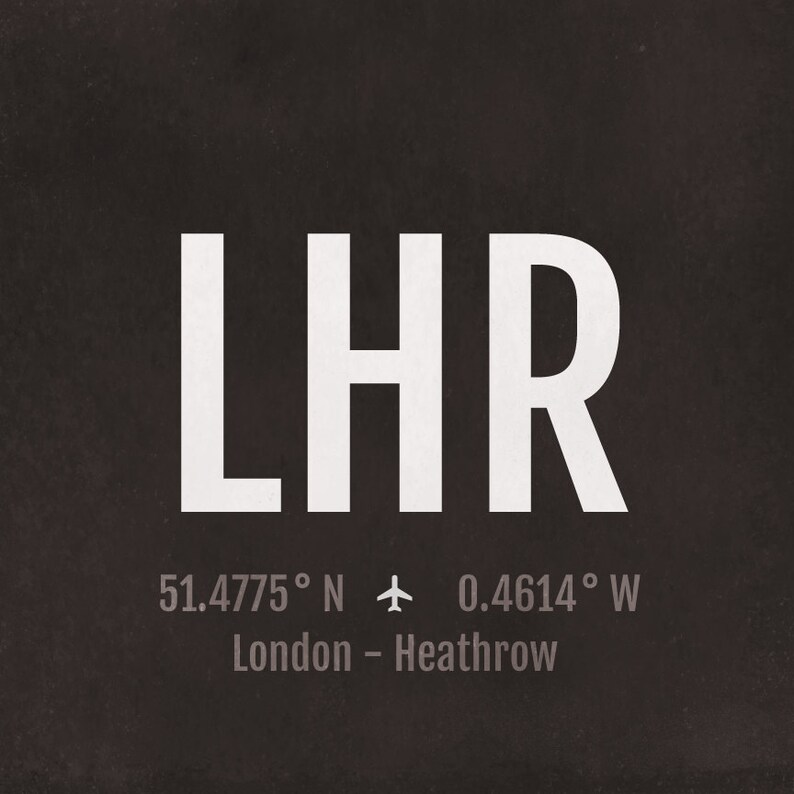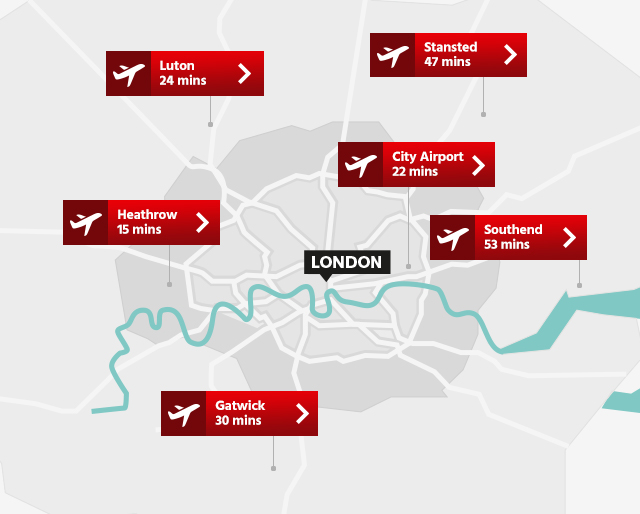London Heathrow Airport (LHR): Codes, Info, & Travel Guide
Is it possible to navigate the complexities of global travel, particularly when your journey begins or ends in the heart of one of the world's most dynamic cities? London Heathrow Airport (LHR), a colossal gateway, stands as a testament to this intricate dance, handling millions of passengers and countless flights annually.
Often referred to by its IATA code, LHR, or its ICAO code, EGLL, London Heathrow Airport is more than just a transit point; its a microcosm of global connectivity. As the primary international airport serving London, it is the largest in the city and the entire United Kingdom. Heathrow's historical significance and present-day prominence underscore its importance, having been known simply as London Airport until 1966. Today, Heathrow's sprawling terminals and bustling runways paint a vivid picture of its significance on the global stage.
The journey through Heathrow isn't a solitary experience; it is an introduction to the world. With a vast network of airlines and destinations, travelers can embark on journeys to 170 locations. Within its boundaries, Heathrow offers more than just the basic facilities, it is a network of services.
London, a city that thrives on its global connections, boasts a network of airports facilitating the movement of millions of people. Beyond Heathrow, the city is served by London City Airport (LCY), London Gatwick Airport (LGW), London Luton Airport (LTN), and London Stansted Airport (STN). Each airport possesses its unique character, catering to different segments of travelers and airline operations.
Heathrow's operations are a study in efficiency and infrastructure. Two primary runways facilitate a high volume of flight movements, making it a constant hub. Beyond its functionality, Heathrow offers traveler amenities, which include lounges, hotels, and various services to enhance the overall experience. Among these facilities are hotels, like the Sofitel London Heathrow (Terminal 5), the Hilton London Heathrow Airport (Terminal 4), and Yotel, along with lounges such as the No1 lounge (Terminal 3).
For those planning their travel, understanding the airport's codes is vital. The IATA code for London Heathrow is LHR, and its ICAO code is EGLL. These identifiers facilitate seamless travel and are used extensively in flight information and navigation systems. Even with the closure of Terminal 1 in 2015, the remaining terminals, each with its own amenities, contribute to the dynamic operation of the airport.
- Shawn Mendes Dating Life Exes Relationships Current Status
- Khalyla Kuhns Boyfriend What We Know Whats Private
The geographic details of Heathrow are as precise as its operations. Located in London, England, Heathrow is a significant component of the London FIR (Flight Information Region). Furthermore, its exact coordinates, including latitude and longitude, are readily available for reference.
Heathrow Airport's impact is not limited to aviation; it extends to the broader economic and social ecosystems of London. A major employer, it contributes significantly to the UK's GDP. Moreover, the airport serves as a gateway, inviting individuals from across the globe to explore London and the UK.
For assistance or inquiries, passengers can find contact details, including phone numbers, readily available. Furthermore, the physical address, Heathrow Point West, 234 Bath Road, Hayes, Middlesex, UB3 5AP, United Kingdom, is accessible for reference. Heathrow's comprehensive approach in providing information and resources underscores its dedication to ensuring passenger convenience.
Heathrow's significance in Europe is evident. As the busiest airport in Europe and among the busiest worldwide, it stands as a central hub, handling significant passenger traffic annually. The airport's ability to manage a high volume of passengers while maintaining operational efficiency indicates its commitment to excellence in aviation.
In contrast to many airports, Heathrow's codes are deeply rooted in its identity. The IATA code LHR represents London Heathrow, its location and purpose directly reflected in its designation. The airports codes help in the global standardization of airport identification, and ensure efficient communication and coordination within the aviation industry.
A deeper dive into airport codes reveals that not all are unique. The existence of many IATA codes highlights the potential for overlap. Despite this, Heathrow's distinctive codes help identify its location and facilitate smooth operations.
London Heathrow's role in the UK is evident, serving as the primary airport for the nation and a hub for numerous airlines. Its role, particularly as a hub for British Airways, exemplifies its strategic importance in the UK's aviation sector.
In the journey of air travel, the airport's code plays a critical role. For Heathrow, the code LHR becomes a symbol of its presence. Whether a passenger is booking a flight or tracking its status, the code serves as a pivotal point of reference.
Heathrow's terminals are central to the journey and the user experience. Although the airport originally had five terminals, Terminal 1 is now closed. Each terminal is fitted with amenities to satisfy the variety of requirements and preferences of passengers. These range from retail and dining to lounges and accommodations.
The airport's location at 51 28' 14.16" N latitude and 0 27' 42.99" W longitude is an exact representation of its global significance. This geographic location is critical for navigation and air traffic control, establishing Heathrow as a major element of the world's airspace.
The airport's history shows the changing aviation sector. Having changed names to become London Heathrow in 1966, the airport has seen significant change in its operations, facilities, and significance. From its early days as a smaller airport to its current status as a global hub, Heathrow's growth reflects the evolution of air travel.
Heathrow's continuous development shows its commitment to meeting the needs of travelers. The airport's infrastructure is designed to accommodate the growing passenger volume and improving operational efficiency. The inclusion of modern amenities, technological advances, and a focus on customer service demonstrates Heathrow's dedication to aviation excellence.
For passengers in transit, the availability of hotels like the Sofitel, Hilton, and Yotel is essential. These accommodations provide convenience and ease of travel, making layovers and early-morning departures stress-free. Also, the No1 lounge after security in terminal 3 is a good option.
For prospective passengers, Heathrow provides departure information, including information on airlines and flight schedules. The use of airline codes, in addition to the IATA code, allows for the smooth operation of air travel.
Heathrow's position as an entry point to London demonstrates its cultural importance. Heathrow provides a welcome to individuals worldwide, from its art installations to its shopping and dining experiences. In addition to serving as a transportation hub, the airport plays a key role in shaping travelers' initial impression of the UK and the United Kingdom.
The airport serves as an example of the complicated nature of global travel. In an ever-changing environment, Heathrow's adaptation to new challenges is essential to its sustained success. Technological breakthroughs and service advancements show Heathrow's commitment to providing its passengers with a top-notch travel experience.
Heathrow's role is continuously changing in the aviation industry. Its continuous development, investments in innovation, and dedication to passenger satisfaction are crucial. Heathrow is well-placed to maintain its status as a leading global airport, creating an innovative and connected future.
Heathrow airport's significance in international travel is undeniable. Its history, infrastructure, and current operations create a complex world of connectivity. The code of LHR reflects its importance as a global hub, while its commitment to passenger service and innovation demonstrates the airport's vision.
The significance of London Heathrow Airport (LHR) to the aviation industry and global travel is evident. It is more than just a place; it's a place where the world meets, where travel stories start, and where the future of aviation is being built. Heathrow welcomes people from all over the world every day to experience travel and exploration.



Detail Author:
- Name : Lourdes O'Hara
- Username : considine.mertie
- Email : vheathcote@kuhlman.biz
- Birthdate : 1991-01-05
- Address : 31808 Adams Port North Jadynside, IN 95868
- Phone : 1-415-415-0919
- Company : Dare-Eichmann
- Job : Welder and Cutter
- Bio : Ut ut eius vel ullam tenetur consequatur quo sit. Praesentium pariatur veniam est quaerat repellat. Temporibus et eaque in. Omnis nobis tenetur qui explicabo.
Socials
linkedin:
- url : https://linkedin.com/in/bradford_dicki
- username : bradford_dicki
- bio : Veritatis officiis et sed dolore.
- followers : 3951
- following : 1403
tiktok:
- url : https://tiktok.com/@bradford_dev
- username : bradford_dev
- bio : Quia delectus consectetur laudantium et id error recusandae.
- followers : 3483
- following : 1502